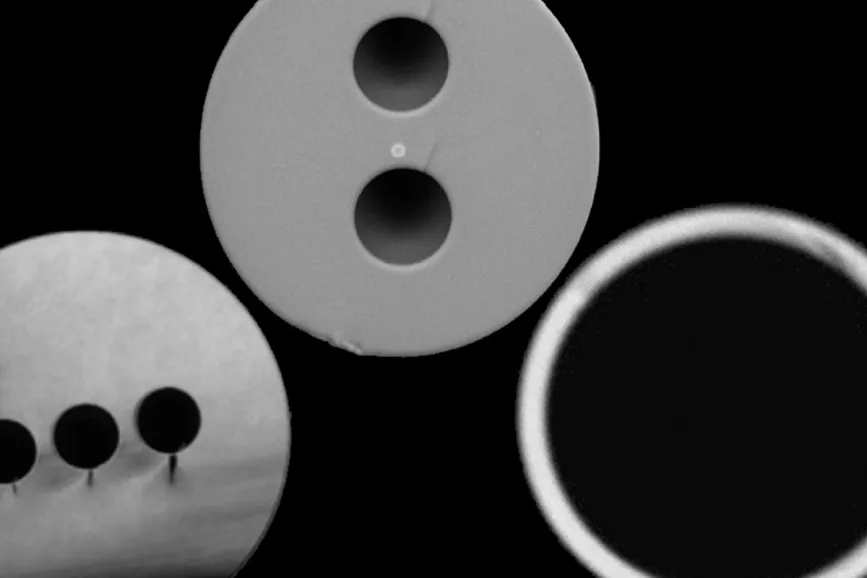Contact person

Fiber optics - Specialty optical fiber
At RISE Fiberlab, we develop and manufacture custom-designed optical fibers for advanced applications where standard telecom fibers don’t suffice. With more than 25 years of experience, we support everything from early-stage research to small-scale production and qualification.
An optical fiber that is adapted to meet non-standard requirements is often called 'specialty optical fiber'. At RISE, we have the expertise and resources to design and develop optical fibers, custom for your application.
We support your needs from early research, through first prototypes, or thousands of kilometers of customized fiber.
Read more about our Fiberlab facility and offer.
What fibers do we offer?
The list of possible specialty fibers is long, we're only giving a few examples here. Contact us to discuss your application!

Specialty optical fiber coatings
An optical fiber is typically made from glass, and the fiber must be coated with a protective layer to not be damaged by e.g. moisture and abrasion.
In many cases, a standard coating is not enough. A special acrylate coating is applied to extend the use to temperatures up to 150°C. Polyimide coated fibers (golden color in the image) are used in application temperatures up to 350°C. Excessive moisture or gaseous environments can create other issues, sometimes mitigated by a thin layer of hermetic carbon.
Other harsh environments may require radiation resistant glass. Medical applications might require biocompatibility of coatings and buffers. Or, as a challenge that was presented to us a few years ago: a fiber that is visible under X-ray. We developed and such a fiber, of course.
Another very interesting possibility with the fiber optic coating is to develop materials that respond in different ways on stimulii, for example humidity or chemicals. Such coatings can be used for fiber optic sensors.
Read more about what specialty coated optical fibers can enable:

Ultra thin optical fiber
A typical optical fiber has a glass diameter of 125µm. That is already quite thin. But in some applications, 125um is too much. Such applications call for 'reduced clad fibers'.
RISE has developed ultra thin optical fibers, with glass diameters down to 25µm. These miniaturized fibers were originally developed for integration in fuel cells, but they are today also used in various sensing applications where size matters.
Read more in our recent publications

Capillaries and microstructured fibers
A capillary is not an optical fiber since it cannot guide light. But quartz capillaries are manufactured in similar drawing towers as optical fibers, and Fiberlab has manufactured many capillary designs over the years.
Microstructured fibers are the combination of holes and optical cores in the one fiber cross section. These fibers are used for e.g. optofluidics or electro optic fiber components.
Read more in our recent publications

RISE Fiberlab, custom built for specialty fiber development
Fiberlab is an independent resource for the developent, prototyping, and manufacture of specialty optical fiber. Our facility holds three 17m tall fiber draw towers, and all the expertise and resources needed for being a world class partner for your challenges in custom optical fibers.
In the lab, we develop and produce optical fiber of various types and dimensions and with the possibility to coat fiber with active or passive coatings. Where relevant, we also provide extrusion of buffers on the fiber.
- For more details on the instrumentation and offer at Fiberlab, contact us or consult our offer page.
What types of optical specialty fibers are there?
There are hundreds of specialty optical fiber types on the market, and the number of possible variants is limitless. We've listed a few examples on this page, but we have many more fibers in our portfolio.
Do you want to discuss how specialty optical fiber can be used in your application, or perhaps you already have a specification on what fiber you need?
Contact Us!
